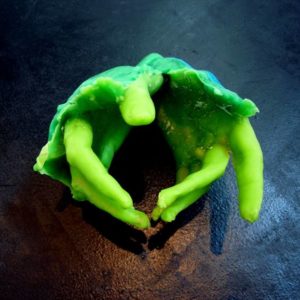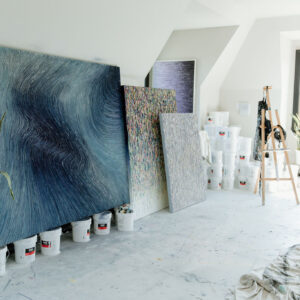The Other Art Fair
 Chicago: An Interview with Digital Media Artist Snow Yunxue Fu
Chicago: An Interview with Digital Media Artist Snow Yunxue Fu
Following the launch of our Chicago edition of The Other Art Fair in September, we interviewed a few artists to get to know them better.
Meet Snow Yunxue Fue, a Chinese-born and Chicago-based artist exploring the aesthetic concept of the sublime through a wide range of digital media. Trained formerly as a painter, Fu is known for her elaborate 3D animations that are modeled after the allegorical paintings of Caspar David Friedrich. Fu introduced computer animation to contemporary art at a time when the medium was colored by its mainstream associations with scientific modeling and commercial animation in film. Fu has exhibited her work around the world. As well, one of her early paintings entered the permanent collection of the National Museum of China in 1994, making Fu the youngest artist represented by the collection.
“We have a long-term dilemma for we have a short-term body.”

How did you first get interested in your medium, and what draws you to it specifically?
I am interested in the idea of digitally simulated natural scenes. I like to show the artificiality of digital landscape as a way to think about the materiality of CG [computer graphics]. To a certain extent, I think the digital 3D construction parallels the formation of the natural landscape. The digital is also an expressive space, and by using the appearance of nature, I examine what it means to be human in the physical world—immersed in technological culture—in my work.
What are the major themes you pursue in your work?
My artwork approaches the subject of the sublime using topographical computer rendered animation installations. I examine and interpret the world around me through digital reality, where I draw a parallel to the realms of the physical, the virtual, the metaphysical, and multi-dimensionality. Modeling my CG animations on the allegorical paintings of Casper David Fredrich, I continue my aspirations in the sublime from my painting background into experimental digital media, exploring the nature of physical and metaphysical limits, as the work also mirrors the fundamental aspect of Chinese Traditional Landscape Painting, which often presents a type of virtual space where the significance of the individual and linear perspective is blurred into a voluminous landscape. Extending out from the pictorial, my installation work engages in a metaphoric relationship with physical perception, by which the sublime is framed and the viewer is invited to enter into a liminal interior within a digitally constructed realm.












